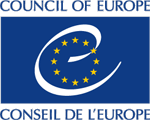International Women's Day
On Friday, March 8 2024, International Women's Day, the formal inclusion of the right to abortion in the French Constitution will be commemorated with an official ceremony. This progress comes after a long struggle for women's rights, starting with iconic figures like Louise Weiss in the 1930s and Simone Veil in 1975, who brought in the law on abortion and was the first President of the European Parliament to be elected by universal suffrage in 1979.
This quest for gender equality spans centuries, marked by milestones such as the Declaration of Sentiments at the Seneca Falls Convention in 1848 and New Zealand granting women the right to vote in 1893. In the early 1900s, the UK saw the suffragette movement, with a decisive moment in 1918 when women over the age of 30 gained the right to vote. The Nordic countries, notably Finland in 1906, set a European precedent with universal suffrage, followed by Norway, Denmark and Iceland. French women were granted the right to vote in 1944 by an ordinance issued by General de Gaulle, the last women in Europe to have access to the ballot box. Although progress has been made, challenges remain in the political, economic and social spheres.
Women's rights face significant threats in countries like Afghanistan, where the Taliban had severely restricted women's rights since seizing power in 2021. The need brave protests in Iran and Turkey's withdrawal from the Istanbul Convention illustrate to protect women's rights amid alarming regressions. Even in the United States, the Supreme Court's 2022 decision to overturn "Roe v. Wade" has questioned the right to abortion established there since 1973.
Close links between democratic backsliding and the regression of women's rights are evident in countries like Poland, where abortion rights have been retricted, and Hungary, where significant shortcomings in combating violence against women have been observed. Despite these setbacks, the European Union remains a relative bastion of women's rights, with gender equality enshrined in its treaties since 1957.
However, pay disparities persist, with an average of 13% according to Eurostat, and women remain underrepresented in corporate boards. The November 2022 European directive aims to achieve 40% female representation in boards by 2026.
Gender equality has been in the EU's founding texts since the Treaty of Rome in 1957, but its implementation still requires considerable effort. Women's rights remain vulnerable to economic, social, and health pressure. Proposals to include the right to abortion in the Charter of Fundamental Rights highlight complex political and legal challenges, requiring unanimity among the EU's 27 member states.
Despite these challenges, initiatives at the European level are seeking to institutionalise the fight for women's rights. While the European Union has limited powers in this area, progress is being made, but the need to overcome legal obstacles persists. Women's rights, though fragile, continue to be the subject of growing attention and commitment to promoting genuine gender equality in Europe.





